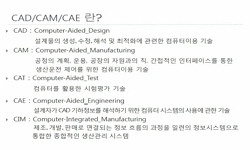About 300,000 tons of oyster shells are produced annually in Korea, but many of them are piled up without being reused. Oyster shells are suitable for use as a source of calcium after calcination because their primary gradient is calcium carbonate. Re...
http://chineseinput.net/에서 pinyin(병음)방식으로 중국어를 변환할 수 있습니다.
변환된 중국어를 복사하여 사용하시면 됩니다.
- 中文 을 입력하시려면 zhongwen을 입력하시고 space를누르시면됩니다.
- 北京 을 입력하시려면 beijing을 입력하시고 space를 누르시면 됩니다.
A study on encapsulating probiotics through indirect carbonation using oyster shells = A study on encapsulating probiotics through indirect carbonation using oyster shells
한글로보기https://www.riss.kr/link?id=A108633165
- 저자
- 발행기관
- 학술지명
- 권호사항
-
발행연도
2022
-
작성언어
-
- 주제어
-
KDC
500
-
자료형태
학술저널
-
수록면
137-137(1쪽)
- 제공처
-
0
상세조회 -
0
다운로드
부가정보
다국어 초록 (Multilingual Abstract)
About 300,000 tons of oyster shells are produced annually in Korea, but many of them are piled up without being reused. Oyster shells are suitable for use as a source of calcium after calcination because their primary gradient is calcium carbonate. Recently, the probiotics market has been growing rapidly as interest in health has increased. Commercially distributed probiotics require encapsulation (coating), and the survival rate of probiotics varies depending on the capsule material and manufacturing process. Existing technologies necessitate multiple coatings of probiotics, mainly by adding alginate, protein, polysaccharide, and other chemicals. Such additional processing cause problems such as long manufacturing time, process complexity, and increased production cost. Furthermore, many probiotics die due to coating deformation during freeze-drying, and the number of probiotics that die in the body despite coating is considerable. In this study, we developed a technology to encapsulate probiotics with calcium carbonate produced by indirect carbonation using oyster shells as a calcium source. We added probiotics to the hydrated suspension of the calcined shells and injected carbon dioxide to produce probiotics encapsulated with calcium carbonate (PEC). It was confirmed through SEM, CLSM, and TGA analyses that the probiotics were encapsulated with calcium carbonate and the probiotics within the capsule were alive. Through indirect carbonation using oyster shells, we developed a technology for encapsulating probiotics, which was more economical than the existing probiotic coating technology. Furthermore, since the capsule shape was not deformed during the drying process of PEC and probiotics were protected from gastric juice and bile, the intestinal arrival rate of probiotics was high, enabling the efficient intake of probiotics. In addition, since the encapsulated calcium carbonate was dissolved in the body, there would be advantageous to consume calcium nutrients.
동일학술지(권/호) 다른 논문
-
Game Changing Development in E-waste Recycling in the Age of Electric Vehicle
- 한국폐기물자원순환학회
- ( Kang In Rhee )
- 2022
-
- 한국폐기물자원순환학회
- ( Evangelos Gidarakos )
- 2022
-
Circular Economy of Electrified and Lightweighted Vehicles: Economic and Environmental Benefits
- 한국폐기물자원순환학회
- ( Hyung Chul Kim )
- 2022
-
New Recycling Processes of E-wastes using AI and IoT Technologies
- 한국폐기물자원순환학회
- ( Seung-whee Rhee )
- 2022




 KISS
KISS




